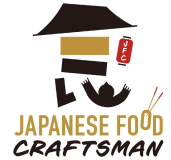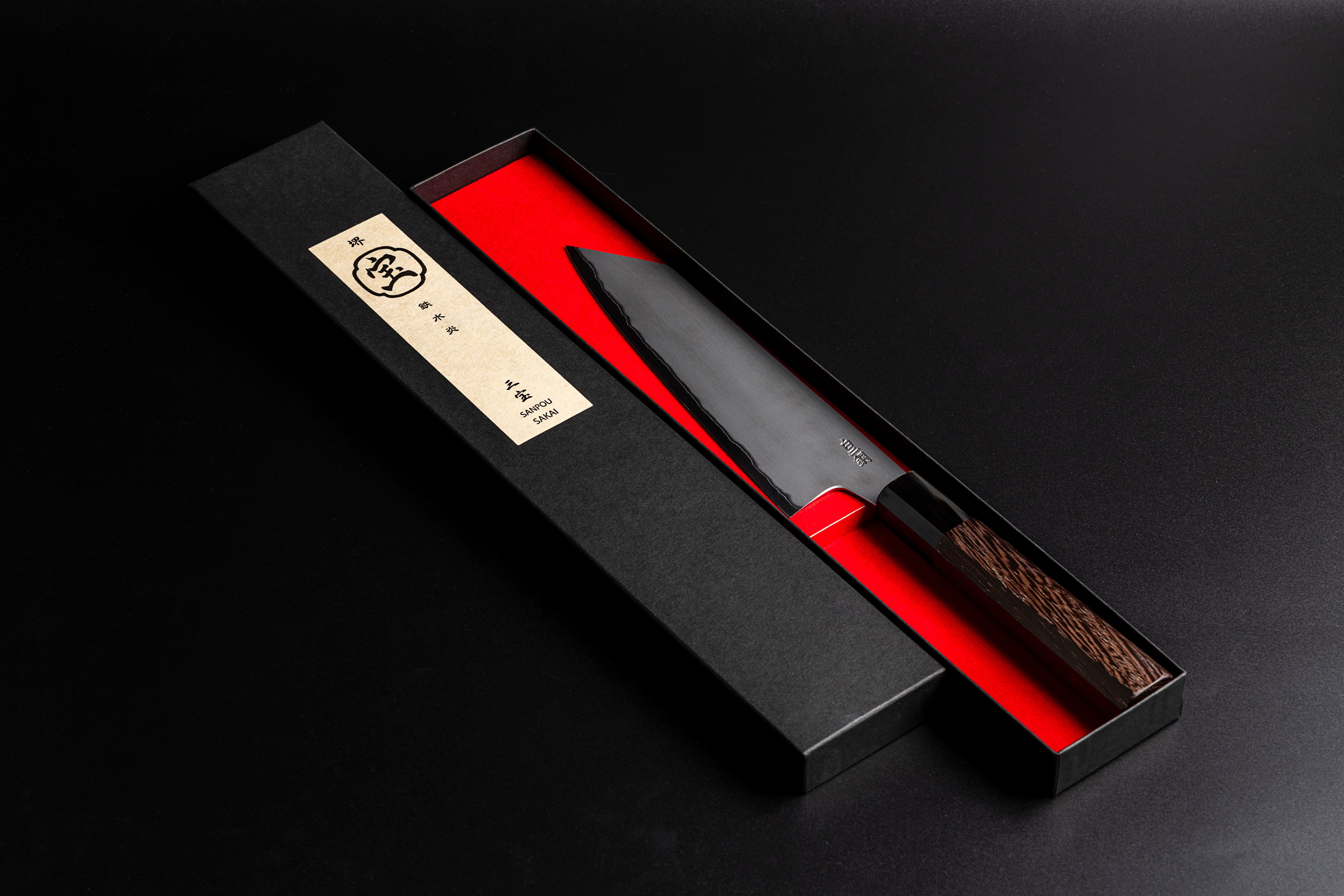



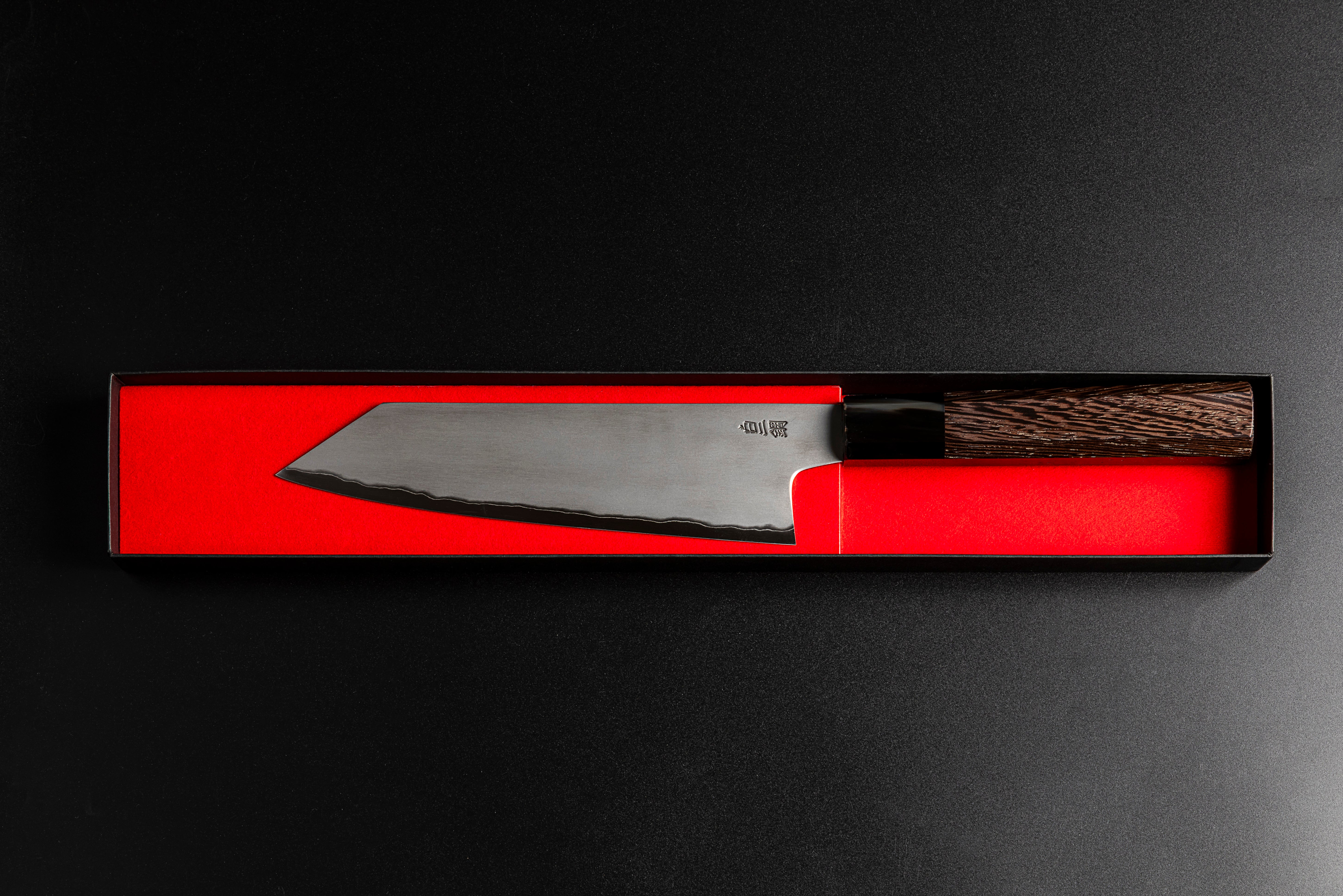

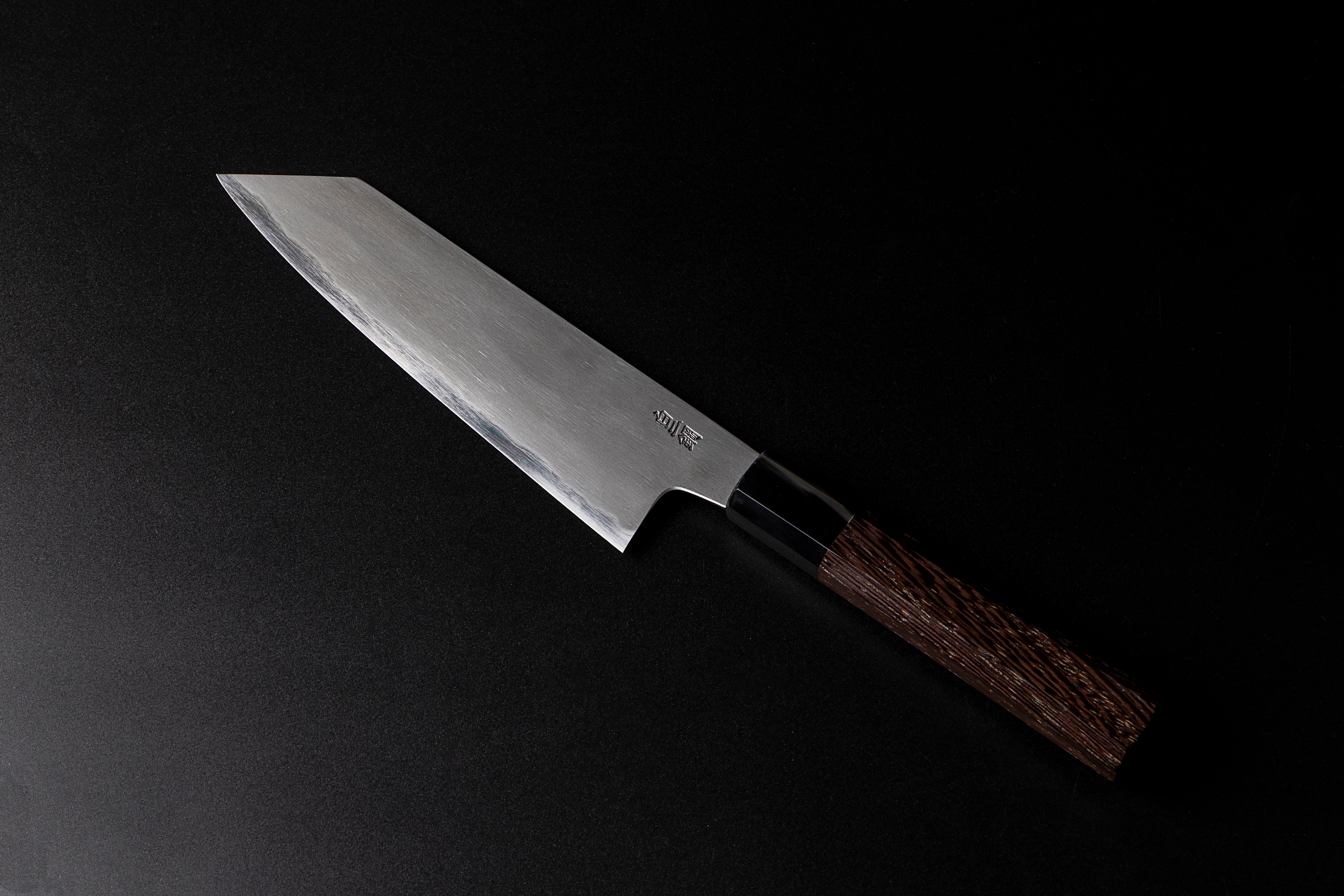

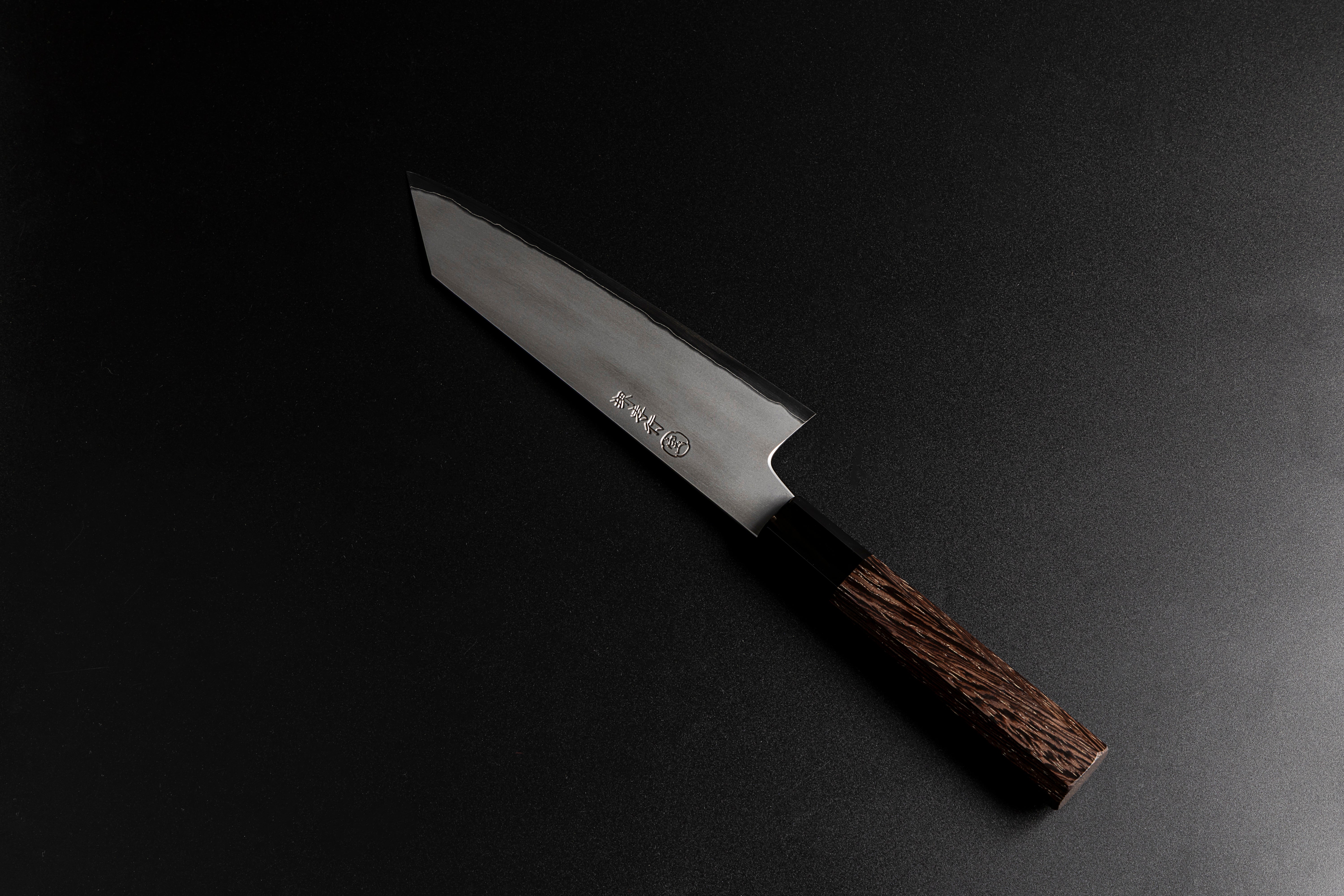

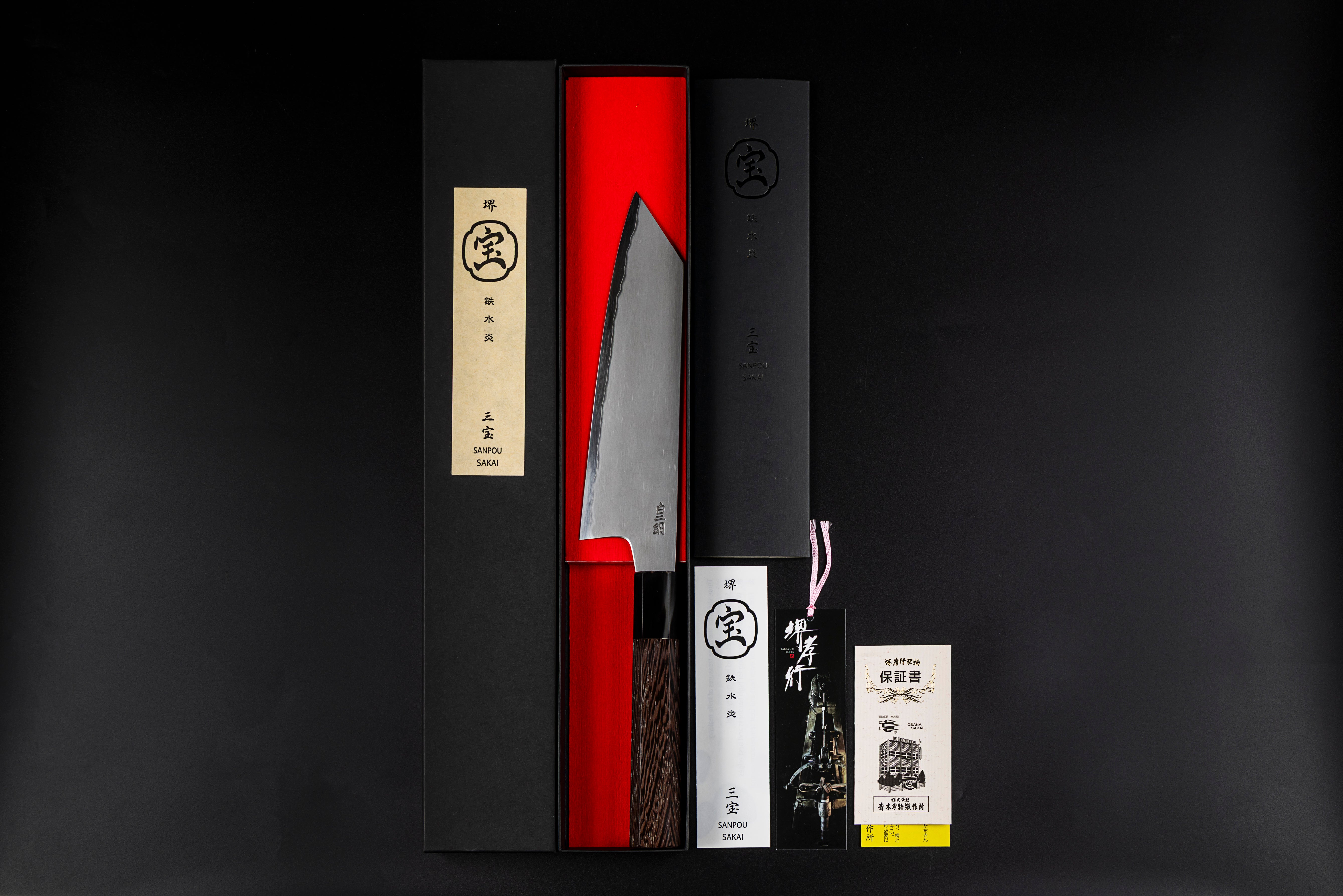



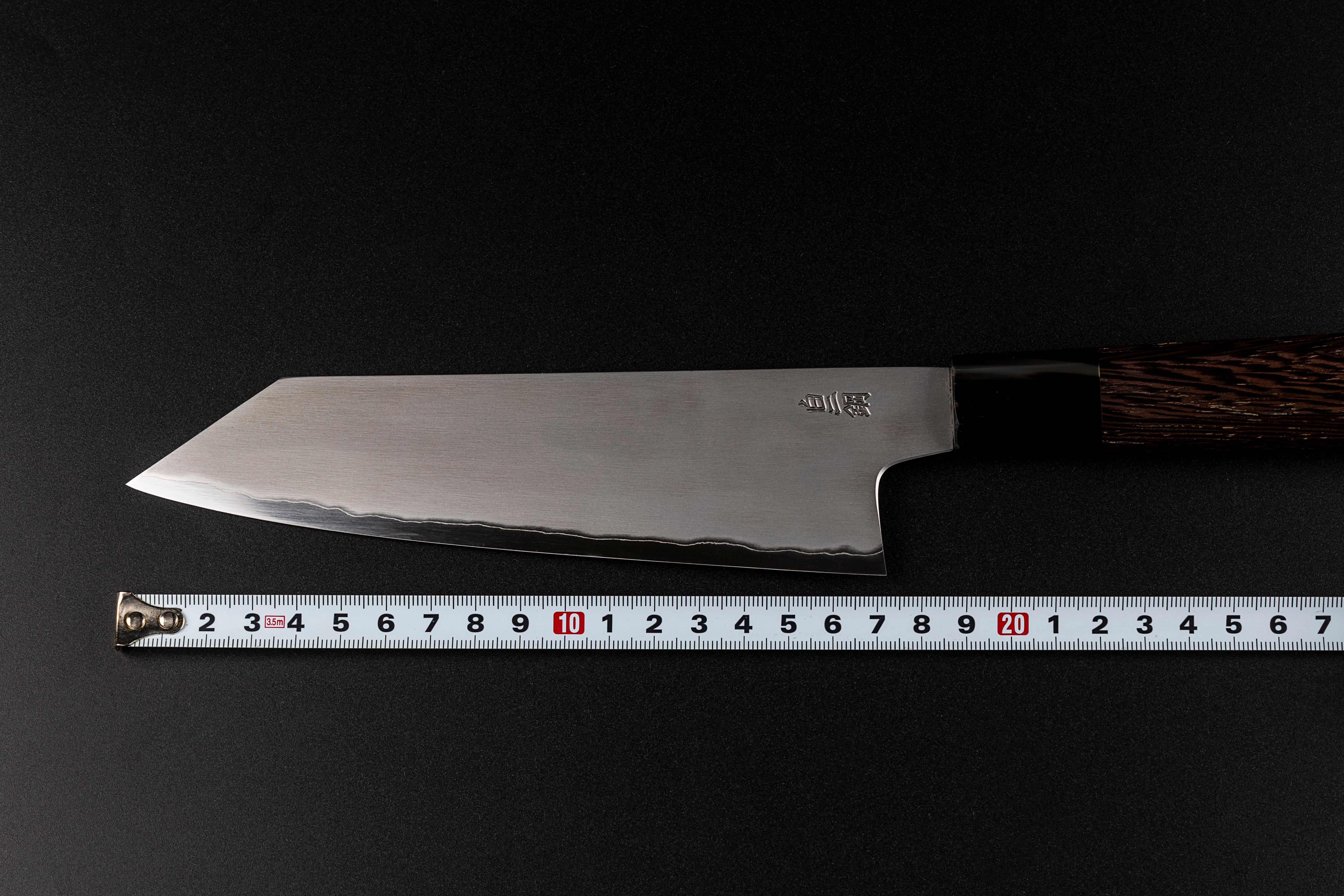



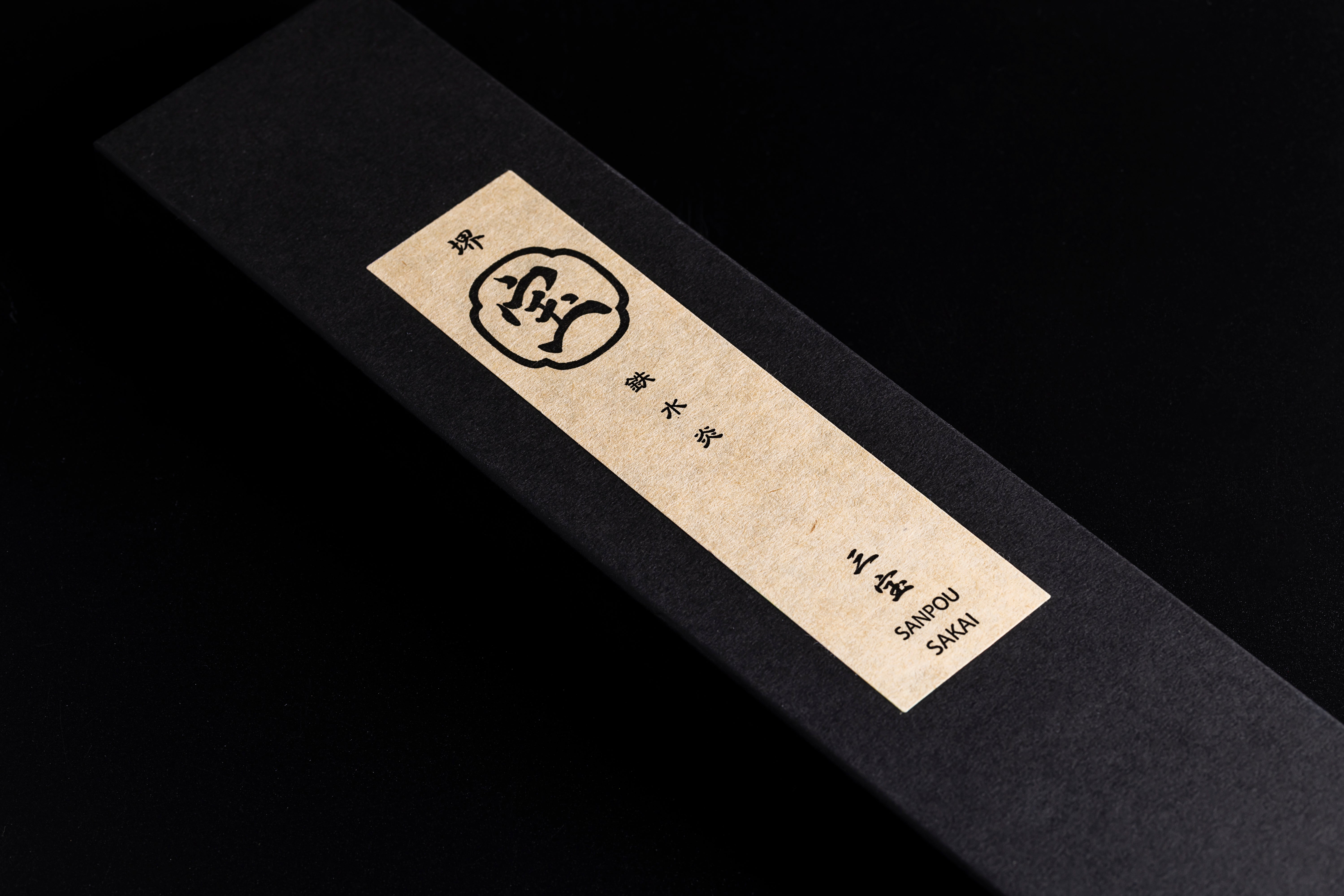

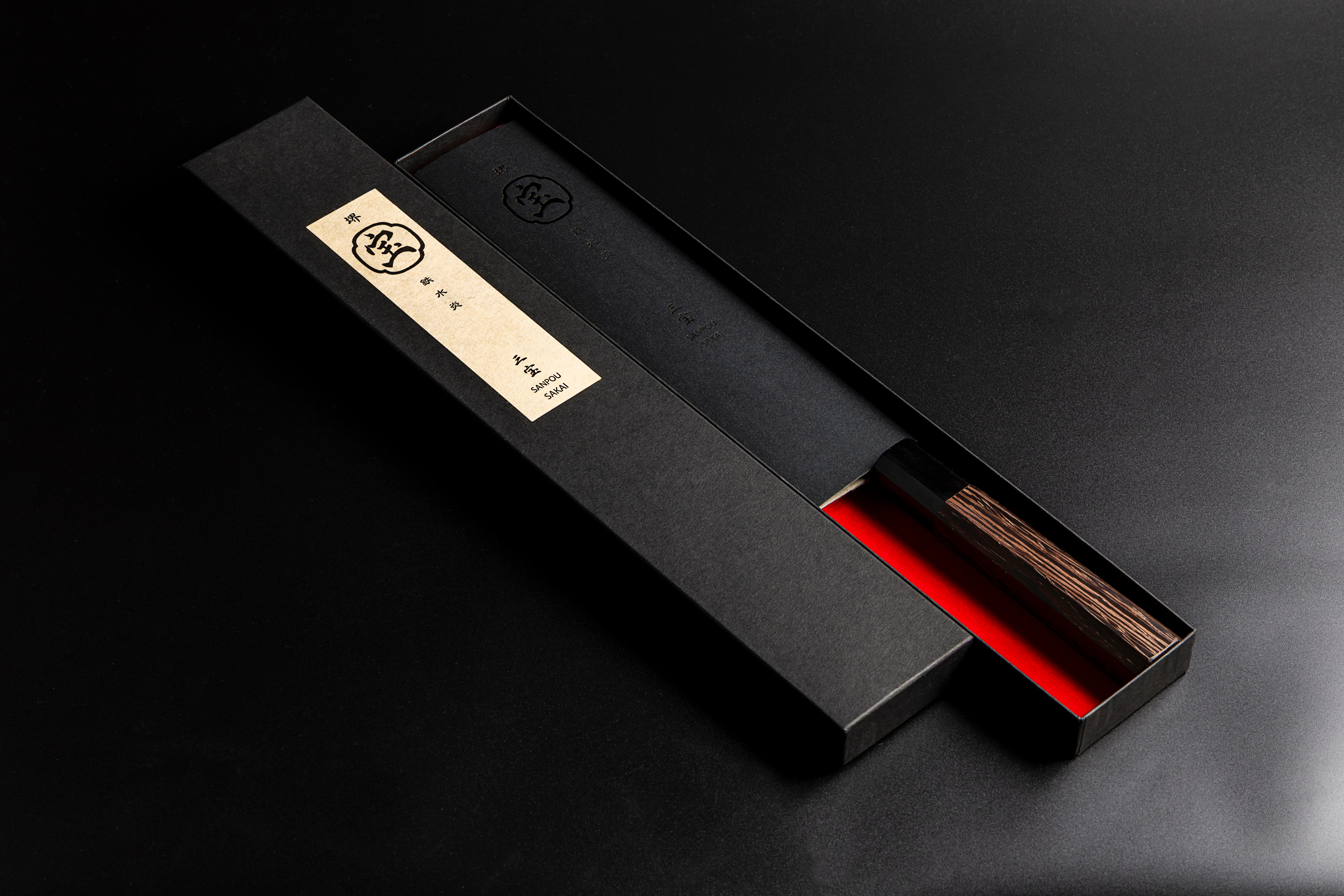

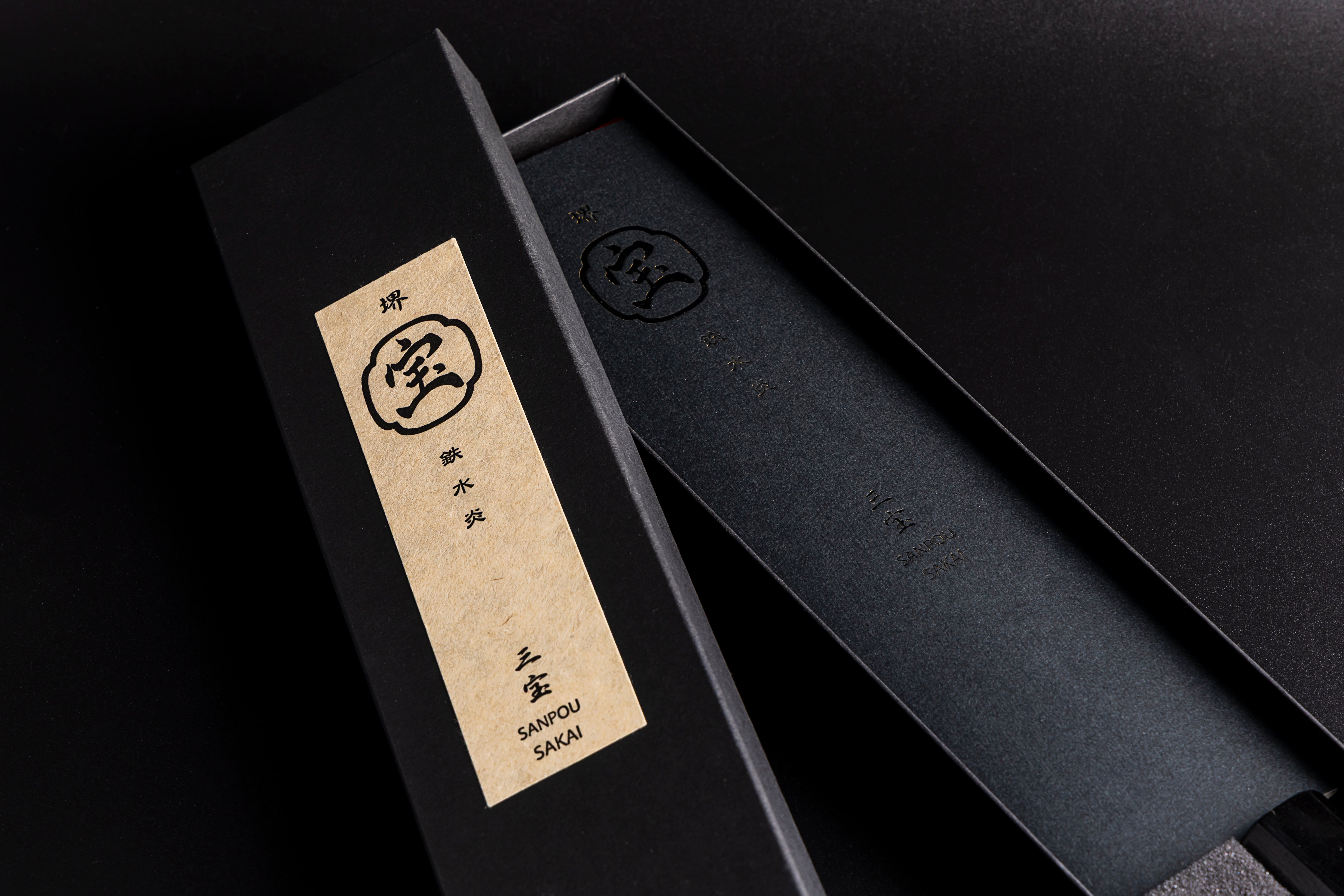

























Sakai TAKAYUKI Kiritsuke 180mm
Includes:
- Stainless Kiritsuke Kitchen Knife (handcrafted from Shirogami #2 and stainless steel, about 180mm blade length)
- FREE WORLDWIDE SHIPPING
A handcrafted double-bevel Kiritsuke knife made from Shirogami (white steel) No.2, with a cloudy-polished finish.
Forged by hand at Aoki Hamono in Sakai, this blade is stainless and engraved with the smithy’s signature. The wenge wood handle has a comfortable grip and elegant finish, providing balance and durability for long-term use. Each blade is carefully sharpened and polished to achieve professional-level cutting performance.
About the blade:
The Kiritsuke is a traditional Japanese multi-purpose chef’s knife, recognized by its distinctive angled tip. It is excellent for precise slicing of fish, meat, and vegetables, combining the functions of both a Yanagiba (slicer) and an Usuba (vegetable knife). Traditionally reserved for master chefs in Japan, it is admired for its versatility and precision, making it a prized tool for skilled cooking at home or in professional kitchens.
*Each knife is crafted by hand, so there may be slight variations in weight and dimensions. We ask for your kind understanding.
*Depending on the number of orders and smithy availability, it can occasionally take up to 3 months for your knife to ship.
*Depending on the value of your order and local import rules in your country, you may be required to pay additional import taxes when your package arrives.
Aoki Hamono, Sakai: hand-forged Sakai Takayuki knives made one by one
AS FEATURED ON YOUTUBE
Watch the Aoki Hamono factory on YouTube: forging, hardening and hand-sharpening with Shirogami cores and stainless cladding.
OVERVIEW
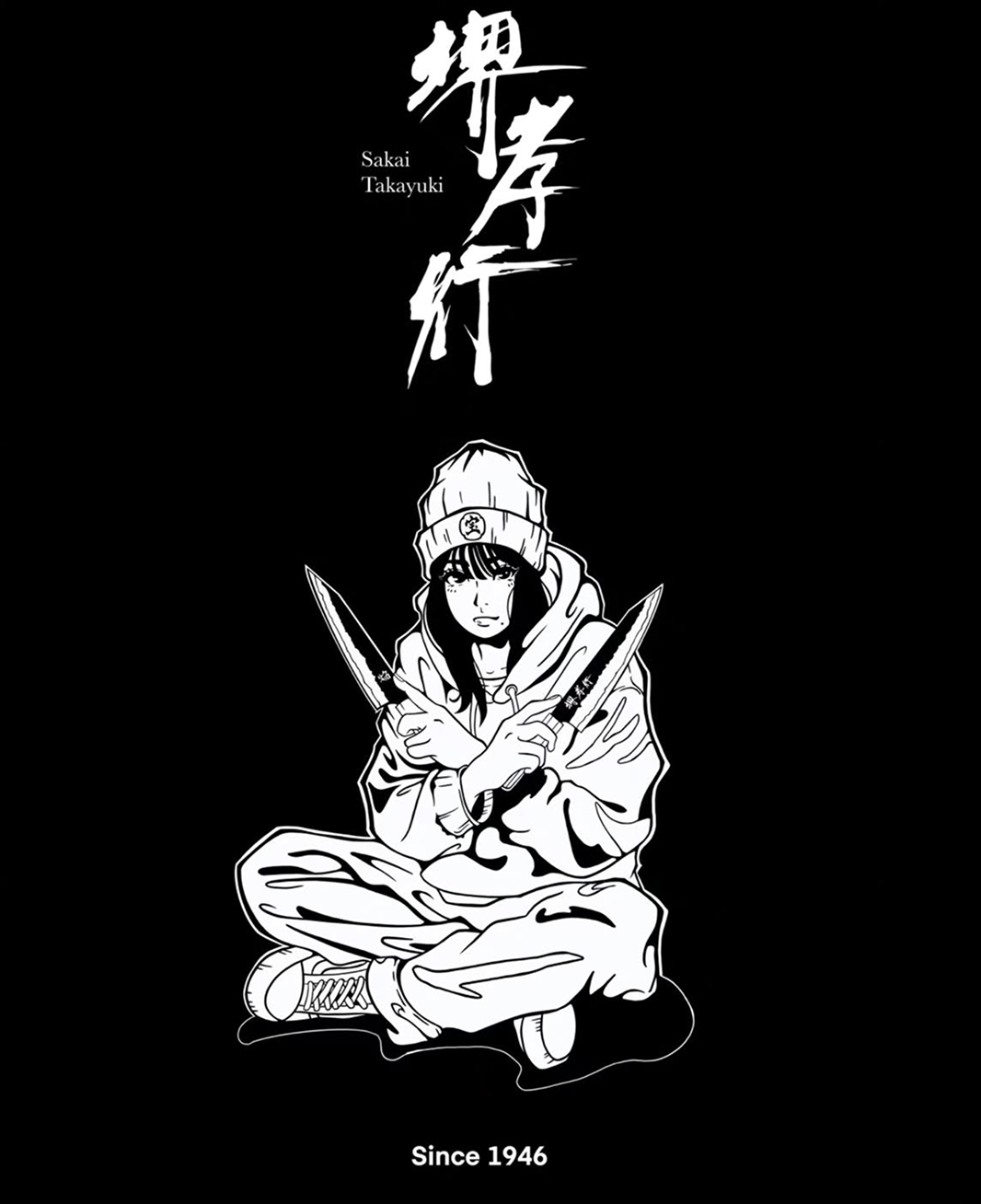
Aoki Hamono is a Sakai workshop founded in 1947. The team blends master smiths and younger artisans who work side by side.
Each blade is made one by one. Core steel and cladding are selected for the task, geometry is controlled by eye and measurement, and the final edge is set by hand. The brand is known globally as Sakai Takayuki. Retail models in the online shop use Shirogami No.2 with stainless cladding for practical care.
PHILOSOPHY AND PROCESS
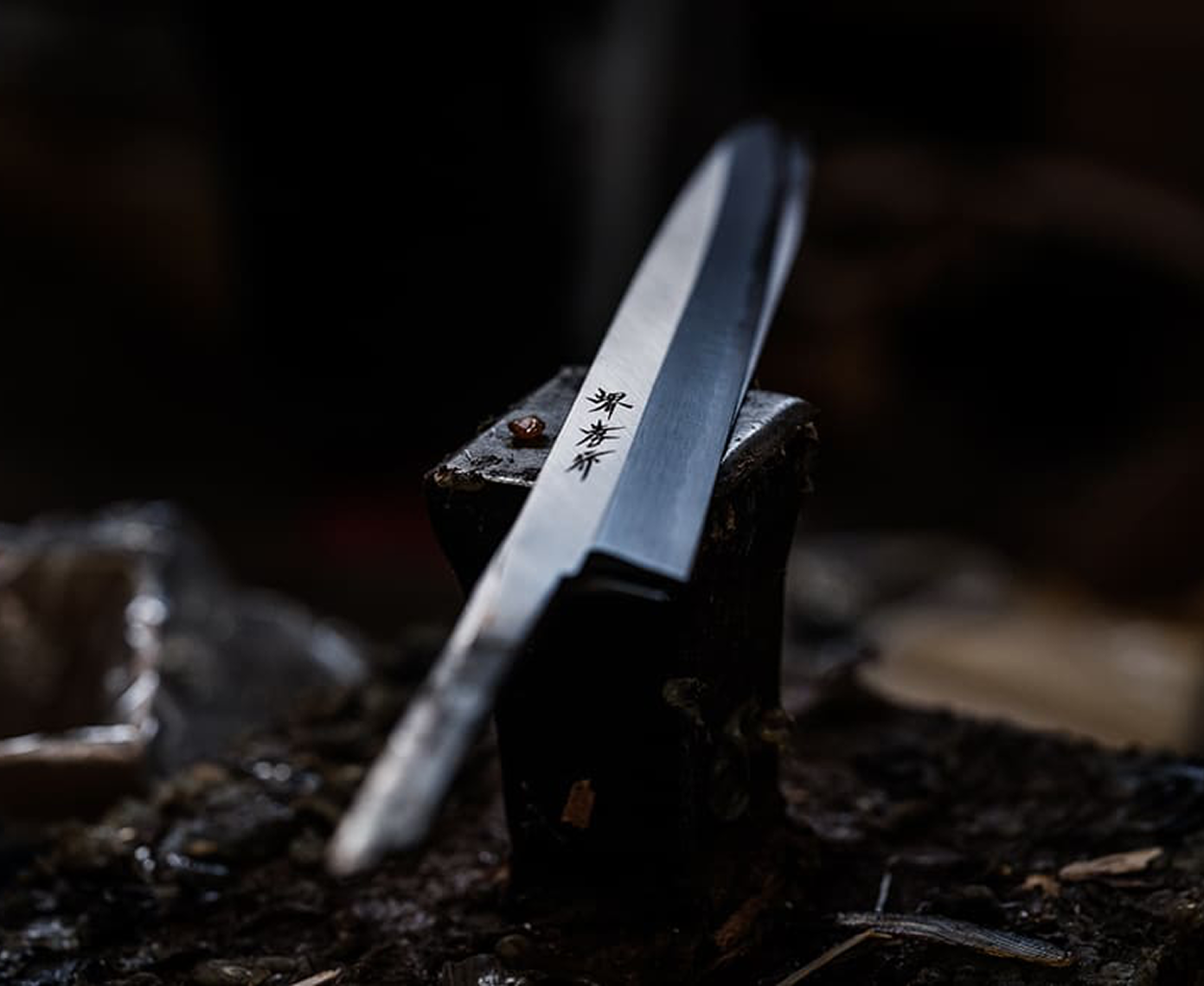
Fire, Steel, and Geometry
Hiroyuki learned under his father by watching, not by lecture. He still measures himself against that standard and says he is trying to catch up. Yuuki is eight to nine years into the craft and gets more step-by-step coaching from his grandfather.
They both point to the long road: three years to grasp sharpening, about ten to learn forging, fifteen years at least before you feel confident. Progress is daily, not sudden. The goal is a knife that customers call easy to use and a cut that simply feels right.
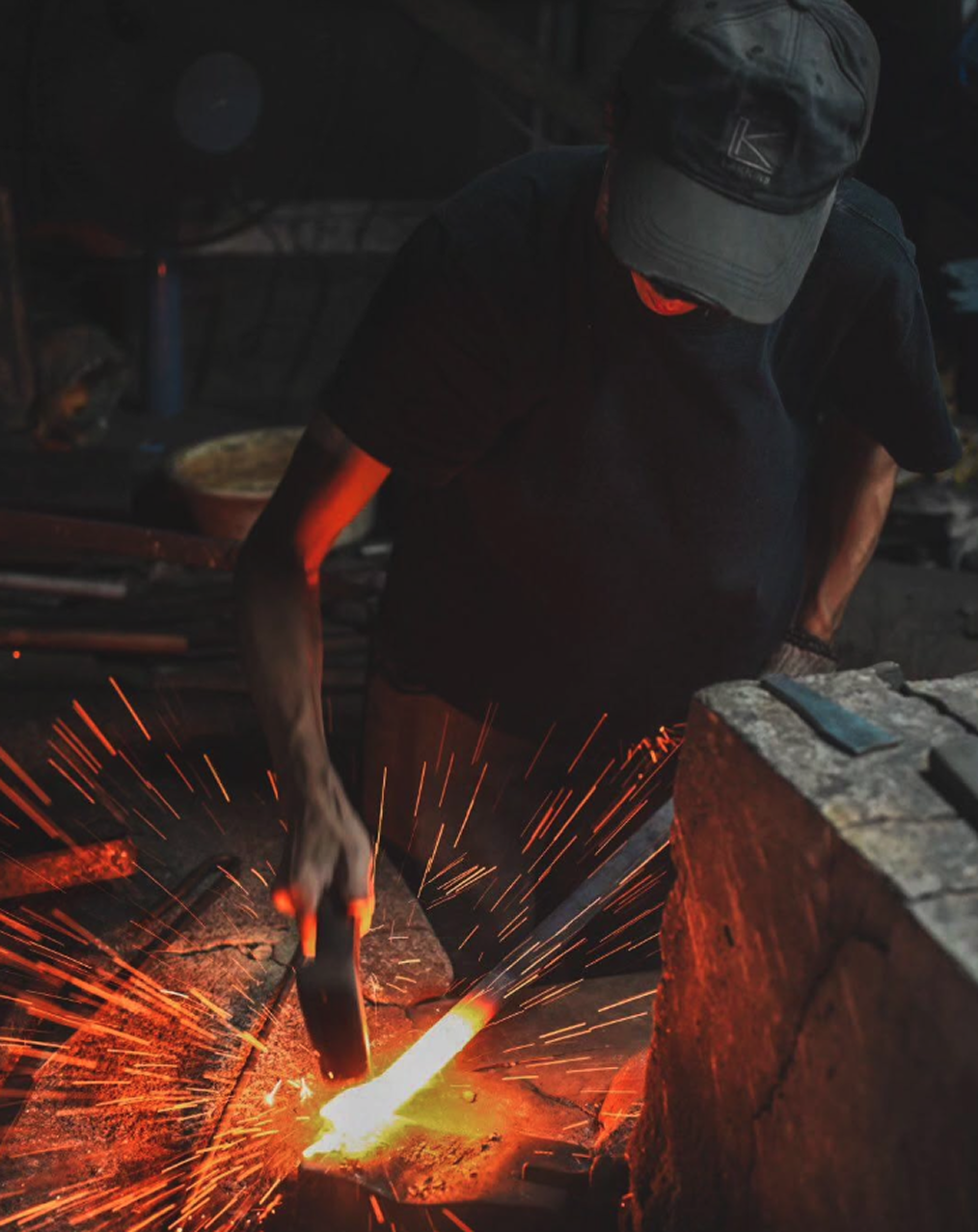
Hardening, Tempering, and Straightening
Before hardening, a thin mud slurry is applied to promote even heat and a clean quench. Quenching is carried out around 750 to 800°C, then the blade is tempered near 200°C to restore toughness.
Red pine charcoal is preferred for a smooth heat rise and fewer sparks. Annealing in lime controls cooling and prepares the steel for grinding. Straightness is checked against fluorescent light from spine and edge to catch twist early. Errors are corrected now so sharpening proceeds without fight.

Finish, Edge, and Feel
Oxide scale is removed so stones bite correctly. Rough grinding sets primary geometry. Honing thins the blade to true cutting thickness. Buffing takes down grinder marks. Shot blasting may be used to reveal contrast between hard core and softer cladding.
A small secondary edge is added for bite and stability. Burrs are removed carefully, even with denim, to leave a clean, smooth cut. Spine and choil are eased for comfort. The maker’s stamp is applied, the handle is fitted, and the blade receives a final check for line and light.
Online shop models are Shirogami No.2 with stainless cladding. Some workshop footage shows iron-clad or fully polished pieces used for training and demonstration.
MESSAGE FROM THE MAKERS
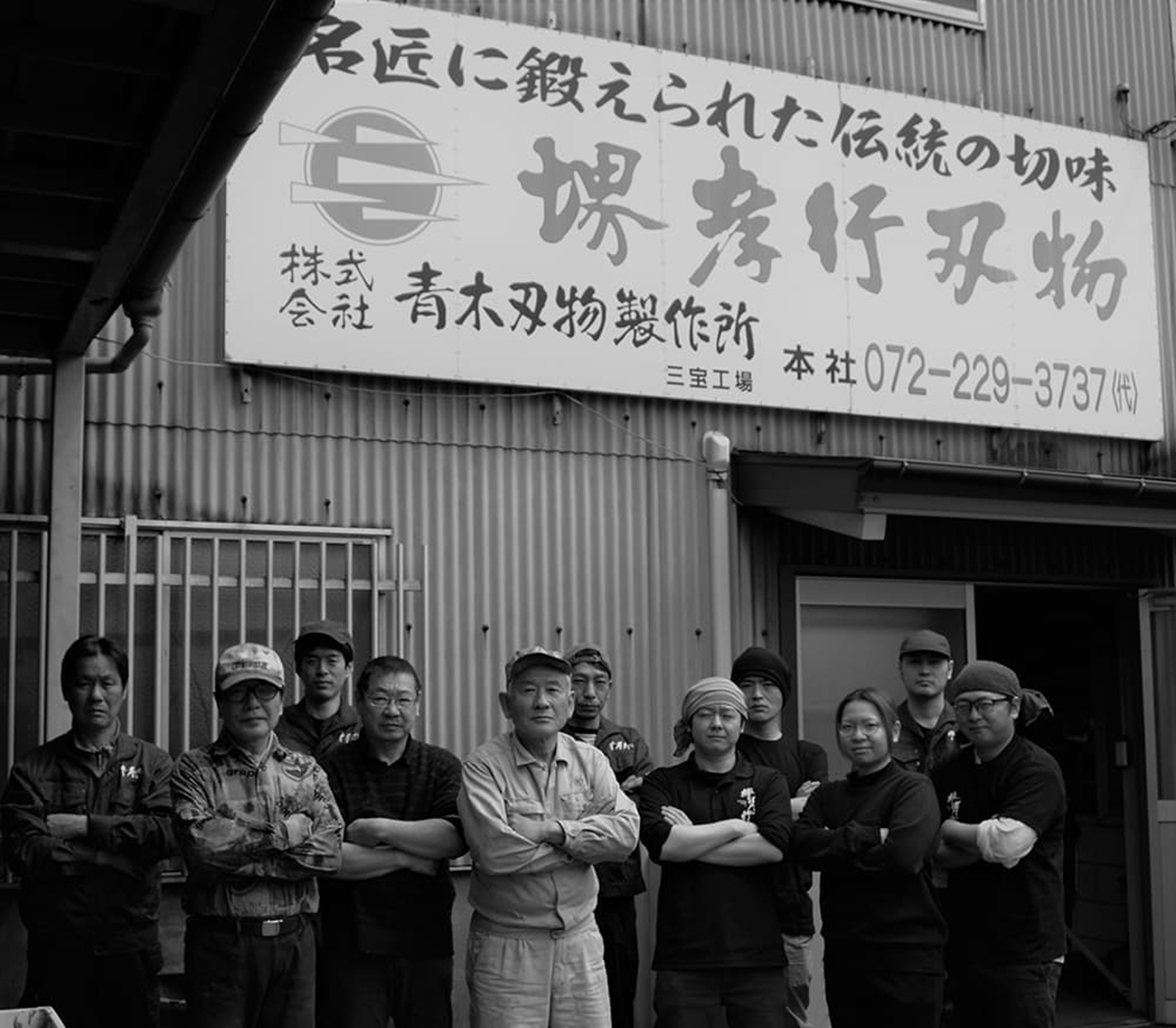
The team describes the work as a bond formed at the forge and the wheel. Ideas are shared openly. Feedback is direct and specific. A junior smith learns by doing under senior guidance, which shortens the path to full capability. Bladesmiths focus on heat control, clean welds, and thickness management.
Sharpeners focus on line quality, polish, and how the edge feels on the board. Everyone understands that each step affects the next. The aim is simple. Make knives that sharpen easily, cut decisively, and earn trust in daily use.
How to Sharpen your knife
Here is a detailed video on how to use the included sharpening stone, with explanations from Minomo blacksmith Isamu-san!
